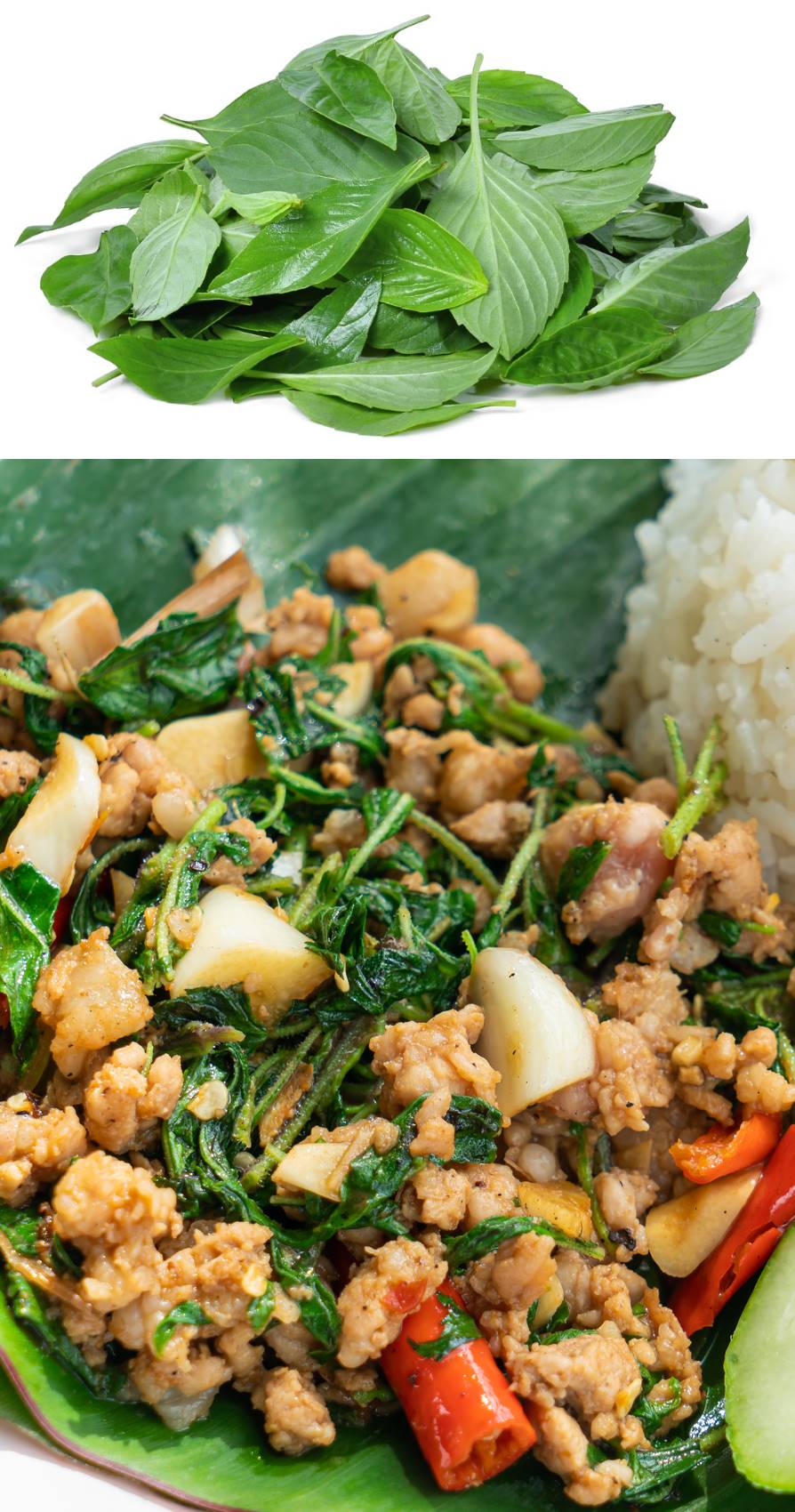Basil. The king's herb.

Basil seems to enjoy confusing us lovers of good food. The herb has different shapes and colours, which is sometimes difficult. After all, basil is quite a family, as there are about 160 varieties. Taste, shape and colour vary from Thai basil to Greek basil and Napolitano, and from lemon and cinnamon basil to purple basil and Mammoth, with a leaf as big as a hand (which is why people sometimes think it is lettuce).
The tasty leaf originally comes from South Asia, but is now also ubiquitous in European cuisine. Basil goes into Provencal pesto soup, and the Italians like to add it to sauces and pasta. We probably don't need to tell you how delicious basil is with fresh tomato and mozzarella.
The basil that you eat in Europe has a peppery flavour. This is usually green basil (with bright green oval leaves with veins) or red or purple basil.
In South-East Asia, you will find very different types of basil. Take the Thai basil, which is sweet and has a taste reminiscent of aniseed and nuts. The leaves of Thai basil are dark green, often a little purple, and rougher and firmer than those of many European basil varieties. They also give off a stronger aroma.
As mentioned, basil causes confusion. In addition to Thai basil, there is also holy basil in Asia. They both belong to a different branch of the family, but are endlessly mixed up. Holy basil is more oval and spicy and peppery, Thai basil has an elongated leaf and is sweeter (and, to make things more complicated, is also known as sweet basil). The fact that Thai basil and holy basil are sometimes both called Thai holy basil does not make things any clearer.
In Thailand, Thai basil is mainly used for curries, and holy basil in dishes with chicken, fish or in the omelette krapao (krapao is the Thai name for holy basil).
Keep it simple: for your Thai curries, soups and wok dishes, use the basil you like. Nobody tells you what to do, just adapt the recipes to your liking. For example, we have a slight preference for Thai basil, because of the smell and the refined taste combination.
Also in Vietnam, Taiwan, Cambodia and Laos they use Thai basil in abundance. In Vietnam, for instance, Thai basil is often put on the table as an extra vegetable and it is an important seasoning in the national dish pho.
Although basil originates from South Asia and is commonly eaten in Asian countries, the herb has a name derived from Greek: basileus. And that means as much as 'king'. Possibly because the herb was used for a royal medicine or in the royal bath, but nobody knows for sure. It does explain why basil is called king's herb in some countries.


